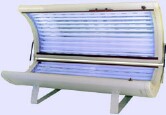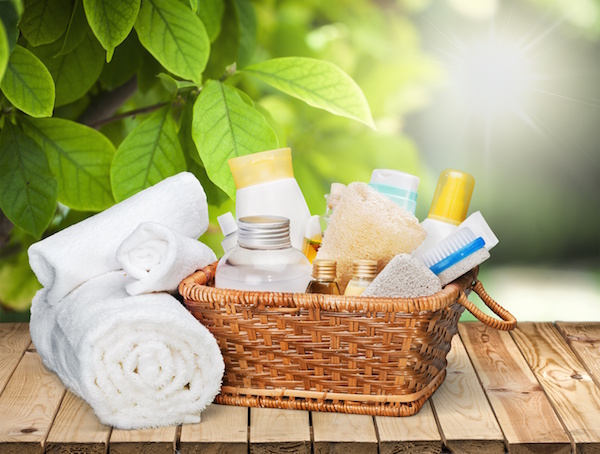
TUESDAY, Feb. 9 (HealthDay News) — Tanning beds — America’s latest health scourge — could come under tighter regulation soon, as a result of studies linking them to cancer.
The U.S. Food and Drug Administration and members of Congress are scrambling to protect tanning salon patrons — young women, in particular — from exposure to harmful ultraviolet (UV) rays.
“To me, tanning is exactly the same as smoking,” said Dr. Darrell S. Rigel, clinical professor of dermatology at NYU Langone Medical Center in New York City. “Just like smoking, the more you do of it, the greater the risk of getting skin cancer later in life.”
The regulatory crackdown follows a slew of studies in recent years documenting the health risks of UV exposure from tanning lamps.
These studies show that UV radiation exposure during indoor tanning damages the DNA in skin cells and that excessive exposure can lead to skin aging, immune suppression and eye damage, says the American Academy of Dermatology Association (AADA).
“There’s a growing recognition that, number one, this is potentially dangerous, and number two, this is really affecting the most vulnerable population,” predominantly young women, explained Dr. William Ting, a private practice dermatologist in San Ramon, Calif., who has studied the melanoma risk related to indoor tanning.
The issue grabbed headlines last summer after the World Health Organization’s (WHO) International Agency for Research on Cancer upgraded tanning beds from “possibly carcinogenic to humans” to “carcinogenic to humans.”
WHO’s reclassification followed a review of research published in The Lancet Oncology showing that the risk of melanoma increases by 75 percent when use of tanning beds begins before age 30.
Melanoma, a deadly form of skin cancer when it’s not recognized and treated early, is now the second most common form of cancer among 15- to 29-year-olds, says the AADA.
The FDA plans to hold a public hearing March 25 to review the growing body of scientific literature linking UV radiation and skin cancer. The agency is considering stricter regulations, including limits on UV exposure from sun lamps and stronger warning labels.
A bill introduced in Congress on Jan. 26, the “Tanning Bed Cancer Control Act,” would do much of the same.
“Tanning beds are the cigarettes of our time: cancer-causing and poorly regulated,” Rep. Carolyn Maloney (D-NY), one of the chief sponsors of the bill, said in a statement.
While endorsing an all-out ban on the sale and use of tanning equipment for non-medical purposes, the AADA said it would support the placement of a “Surgeon General’s warning” on all tanning devices.
“Ultimately, this will help educate the millions of Americans who tan each day about the potential cancer risks associated with UV radiation,” said AADA President Dr. David M. Pariser.
John Overstreet, executive director of the Indoor Tanning Association in Washington, D.C., noted that the FDA already requires protective eyewear and a “pretty explicit warning” that includes risk of skin cancer. Nevertheless, he said the industry would not be averse to making warning labels simpler for consumers to understand.
But Joni A. Mayer, professor of public health at San Diego State University, said the federal measures are not enough to protect teens from skin cancer.
The FDA currently recommends limiting tanning exposure in the first week to no more than three sessions.
But for a study published last September in the Archives of Dermatology, Mayer and colleagues had data collectors posing as fair-skinned 15-year-olds call tanning businesses across the United States. Seventy-one percent of tanning bed operators said they would allow the teens to tan every day if they wished.
“Once someone gets to a tanning salon, their decision to purchase a tan is already made,” Mayer said. And although some states have parental consent laws, she believes many parents are providing their consent. What’s more, “most tanning salons allow and even encourage customers, including teens, to indoor tan every day,” she added.
“Our data and data of other researchers lead me to conclude that the only thing that will really work to protect teens from this carcinogen is to ban indoor tanning of minors,” she said.
In November 2009, the Board of Health in Howard County, Maryland, became the first county in the nation to enact such a ban. No one under 18 years old may use tanning devices in the county unless they have a prescription from a physician indicating the nature of the medical condition requiring treatment, the number of visits allowed and the time of exposure for each visit. Tanning facilities must also check photo ID to ensure that a customer is not a minor.
More information
The FDA has more on the risks of indoor tanning.

